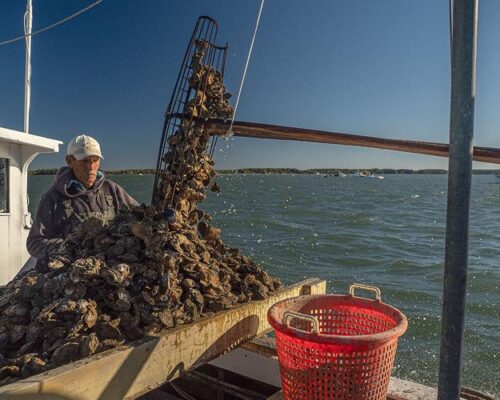A slimy, muddy brown amphibian has become an unlikely symbol of the fight to clean up the Bay watershed. When the U.S. Fish and Wildlife Service (USFWS) denied Endangered Species Act protection for the eastern hellbender in 2019, conservationists fought back with a lawsuit.
Now, a federal judge finds the Endangered Species denial was “arbitrary and unlawful”, ordering USFWS to “make a new decision consistent with law.”
Nicknamed “snot otter,” the eastern hellbender is the largest salamander in North America, reaching two feet long. Its presence (or lack thereof) is considered a bellwether of stream health in the Chesapeake Bay watershed.
“Hellbenders are like the canary in the coal mine. This ancient species is now almost gone from much of Appalachian streams because they are incredibly sensitive to pollutants and the destruction of their habitats when smothered by sediment,” said Robin Broder, acting executive director of Waterkeepers Chesapeake, one of the five groups who filed the lawsuit.
According to the Center for Biological Diversity, who were also involved in the lawsuit, USFWS’s decision to deny protection was based on conservation measures that hadn’t been implemented yet or proven effective.
“This ruling is a lifesaving victory for hellbenders and their declining freshwater habitats,” said Elise Bennett, a senior attorney at the Center for Biological Diversity. “The Fish and Wildlife Service can no longer ignore overwhelming scientific evidence that hellbenders are in danger of extinction and face even greater threats ahead. These odd and charming salamanders can survive, but they desperately need the help of the Endangered Species Act.”
Dr. Peter Petokas of Lycoming College’s Clean Water Institute, who has long studied eastern hellbenders in the Chesapeake region, estimates that as much as 95 percent of the amphibian’s local habitat is gone. Factors like erosion and sedimentation, abandoned mine drainage and other pollutants are to blame.
Hellbenders have only a handful of remaining populations in the United States. The Susquehanna rivershed is one of them. A completely aquatic species, hellbenders use large, flat rocks for nesting and need cool, highly oxygenated streams. They walk on stream bottoms and can live 25-30 years, and possibly as long as 50 years.
The Susquehannock Wildlife Society has declared this month #HellbenderSeptember. They note that historical records list hellbenders in Maryland’s Harford and Cecil counties dating back decades. They report that fishermen used to find and sometimes kill hellbenders, believing they were venomous or were eating all the trout (both are untrue).
“The eastern hellbender was on its way to the brink of extinction, but not today, not ever,” said Ted Evgeniadis of Lower Susquehanna Riverkeeper Association. “…We look forward to an official listing under the Endangered Species Act so that conservation efforts are expanded to support the life of the eastern hellbender.”
-Meg Walburn Viviano



